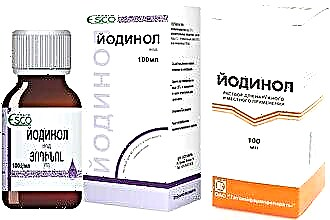Exudative otitis media is a disease of the middle ear, which is characterized by the accumulation of exudate (fluid) in the ear cavity. This form of violation is a consequence of catarrhal otitis media. Below we will consider the causes, symptoms and treatment of exudative otitis media.
Etiology and pathogenesis

Before talking about how to treat exudative otitis media, it is necessary to find out why this disorder develops. Otitis media occurs as a result of exposure to infectious agents that penetrate into the ear cavity from the respiratory tract in disorders characterized by edema of the mucous membrane (ARVI, sinusitis, sinusitis, etc.). With inflammation, the mucous membrane of the nose, pharynx and Eustachian tube swells, as a result of which the patency of the latter is impaired. As a result, after penetration into the nasopharynx, pathogenic microorganisms begin to multiply actively, which leads to the onset of catarrhal otitis media, in the absence of therapy, the disease turns into an exudative form. Pathology proceeds rapidly, especially in young children.
Fluid is continuously produced in the middle ear, which normally flows out freely. With inflammation, the fluid begins to be produced more actively, but against the background of the narrowing of the auditory tube, its outflow becomes difficult. As a result, a large amount of exudate accumulates, which further narrows the mucous tube.
Exudative fluid is a favorable environment for the reproduction of pathogenic microflora. The pathogenic elements are actively spreading, the consistency of the liquid becomes thicker and takes the form of mucus.
In the absence of medical care at this stage of the development of the disease, mucus is converted into pus and purulent otitis media develops.
Symptoms
Exudative otitis media is not accompanied by severe painful sensations and an increase in temperature indicators. These signs are characteristic only for the acute course of the disease - for the catarrhal form. Exudative otitis media is manifested by such symptoms as:
- hearing loss;
- transfusion of fluid in the ears when changing the position of the head;
- ear congestion;
- violation of nasal breathing against the background of nasal congestion.
Therapeutic activities
Treatment of exudative otitis media in adults and children is carried out by various methods. Therapeutic procedures should be aimed at improving the hearing of a sick person and preventing the occurrence of irreversible processes in the middle ear.
If the normal functioning of the Eustachian tube is impaired as a result of diseases of the nasopharynx or paranasal sinuses, then first of all, treatment of these disorders is required.
Treatment of exudative otitis media includes the use of medications and physiotherapy. In addition, it is possible to carry out catheterization with subsequent blowing of the auditory tube.
Physiotherapy procedures are selected by the attending physician individually, taking into account the degree of the pathological process. Most often, hormonal and enzymatic electrophoresis is performed using steroid drugs. Sometimes preference is given to endaural phonophoresis using acetylcysteine.
Drug therapy involves the use of drugs of various actions:
- anti-inflammatory and vasoconstrictor drugs (complex use);
- antihistamines to eliminate swelling of the mucous membrane;
- mucolytics to thin the phlegm that has accumulated in the middle ear;
- antibiotics (today, disputes about the advisability of using antibacterial agents for this type of otitis media do not subside, research in this area is still ongoing);
- enzyme preparations are used in childhood at the 4th stage of development of exudative otitis media.
Surgery
Treatment of exudative otitis media by surgery is carried out in the absence of the effect of conservative therapy. During the operation, the ear cavity is cleared of the accumulated exudative fluid and the function of the hearing organ is restored. Also, the operation allows you to prevent the development of the disease in the future. Before carrying out surgical procedures, obligatory sanitation of the upper respiratory tract is required.
 Based on the severity of the pathological process, myringotomy is performed (during the operation, a small incision is made on the eardrum) or tympanostomy (special tubes are inserted through the hole in the eardrum).
Based on the severity of the pathological process, myringotomy is performed (during the operation, a small incision is made on the eardrum) or tympanostomy (special tubes are inserted through the hole in the eardrum).
Alternative medicine
Treatment of exudative otitis media at home is carried out using the following means:
- Walnut. Pour the crushed walnut leaves with vegetable oil (it is recommended to boil beforehand). It is necessary to infuse this mixture in a dark, cool place for 100 days (the period is quite long, so the healing agent should be prepared in advance). The resulting medicine is used to treat the inner surface of the ear, as well as for compresses.
- Kalanchoe. To prepare the drug, the leaves of the plant should be crushed and filled with pasteurized oil. The mixture is infused for 3 weeks, after which it is used to lubricate the ear cavity.
- sagebrush. 1 tbsp. l. Pour herbs with 100 ml of alcohol, leave to infuse in a cool dark place for 10 days. The mixture must be shaken periodically. The resulting medicine is impregnated with a cotton turunda and inserted into the sore ear.
- garlic. Pour a few cloves of garlic with vegetable oil, boil the mixture over low heat and leave for 7 days. After digging into the cavity of the sore ear. You cannot use garlic juice in its pure form, since there is a high probability of burns.
- mint. 2 tbsp. pour 200 ml of vodka on fresh mint leaves, leave for a week, then strain the composition. Every 3 hours, instill 3 drops of the resulting product in the ear canal.
- rabbit fat. Before using this remedy, the ear should be slightly warmed up (for this purpose, you can use a bag of warm salt or sand). Afterwards, warm fat is instilled into the ear canal. This procedure should be performed 2 times a day, after which a warm dry bandage on the ear is recommended.
It should be remembered that the treatment of exudative otitis media with folk remedies cannot be an alternative to traditional therapeutic methods. Homemade recipes can only be used as an adjunct to mainstream therapy.



